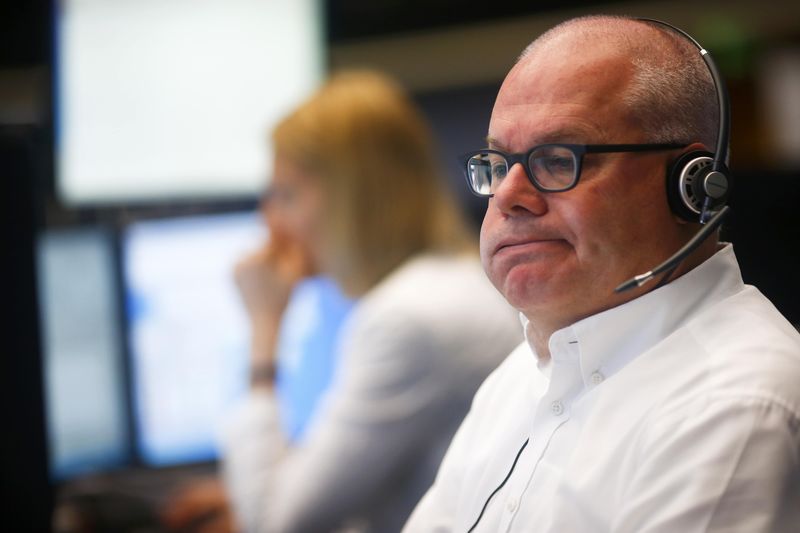Canada’s banks continue to attract considerable negative attention with Toronto-Dominion Bank and Royal Bank of Canada (TSX:RY)(NYSE:RY) being the two largest short positions on the TSX. Most of that pessimism is coming from U.S. hedge funds, including the legendary Steve Eisman, who predicted the U.S. housing meltdown over a decade ago. Their thesis rests on the belief that the banks will be impacted by a weaker economy, which, combined with highly levered Canadian households and a cooling housing market, will trigger a sharp increase in mortgage defaults, causing earnings and hence market value to decline substantially.
The new widow-maker trade Short-sellers have been betting heavily on some form of Canadian housing market and banking crisis since the global financial crisis ended a decade ago. Over that time they have endured such severe losses, because of the strong performance of Canada’s banks, that it is becoming known as a “widow-maker” trade.
Essentially, this is a trade which makes sense fundamentally and intellectually but leaves short-sellers exposed to ever-greater losses because the targeted asset continues to rise in value. The most well-known widow-maker trade, which has cost hedge funds billions of dollars, was shorting Japanese government bonds on the belief that interest rates would rise. This did no occur, despite economic indicators to the contrary.
While the big banks are facing considerable headwinds, which could constrain earnings growth, there won’t be a sharp downturn in their performance because of a marked decline in credit quality, as the short-sellers assert.
The reasons for this are quite simple; U.S. hedge funds have fundamentally misunderstood Canadian banks and the housing market. Canada’s financial system is vastly different from that which existed in the U.S. in the lead-up to the housing bust and ensuing financial crisis. Prudential (LON:PRU) regulation, including mortgage underwriting standards, is far stricter, thus preventing a build-up of subprime mortgages and toxic assets, which were a fundamental cause of the contagion that caused U.S. banks to collapse in 2007. There are also virtually no non-recourse mortgages, and insurance is compulsory for those loans with a down payment of less than 20%, creating an important backstop for the banks.
Royal Bank, which is one of Eisman’s top targets, reported a second-quarter 2019 gross impaired loans (GILs) ratio of 0.49%, which, despite being two basis points higher year over year, highlights the strength of its credit portfolio. Such a low ratio indicates that more than just a normalization of the credit cycle is necessary to impact the bank’s earnings and balance sheet.
It is also worth noting that the value of impaired mortgages and other retail loans was only $16 million higher than for the same period a year earlier. The decline in credit quality was the result of an uptick in impaired loans in the U.S. oil and utilities sectors, including the failure of a major U.S. utility, rather than an increase in mortgage defaults.
Furthermore, 37% of Royal Bank’s Canadian residential mortgages are insured, and those that aren’t have a conservative loan-to-value ratio (LTV) of 52%, indicating that even a major economic decline would have little impact on its loan book.
While credit growth in Canada, which has been a key earnings driver for the banks, is close to its lowest point in over two decades, Royal Bank’s bottom line continues to grow. For the second quarter, it reported that net income had expanded by 6% year over year to just shy of $3.2 billion.
This growth will continue for the foreseeable future, because Royal Bank has reduced its dependence on the domestic housing market by bulking up its U.S. commercial banking and wealth management operations, which are now responsible for 23% of bank-wide revenue. Now that a trade war between the U.S. and China has been averted, the global economic outlook is improving, which will give earnings from Royal Bank’s capital markets a healthy lift over the remainder of 2019.
Foolish takeaway Shorting Royal Bank will be a costly exercise for U.S. hedge funds. The bank’s earnings outlook is positive, while the quality of its credit portfolio remains high. While the short-sellers are losing money, investors who buy today can lock in a sustainable regular dividend, which is yielding a juicy 4%.
Fool contributor Matt Smith has no position in any of the stocks mentioned.
The Motley Fool’s purpose is to help the world invest, better. Click here now for your free subscription to Take Stock, The Motley Fool Canada’s free investing newsletter. Packed with stock ideas and investing advice, it is essential reading for anyone looking to build and grow their wealth in the years ahead. Motley Fool Canada 2019
